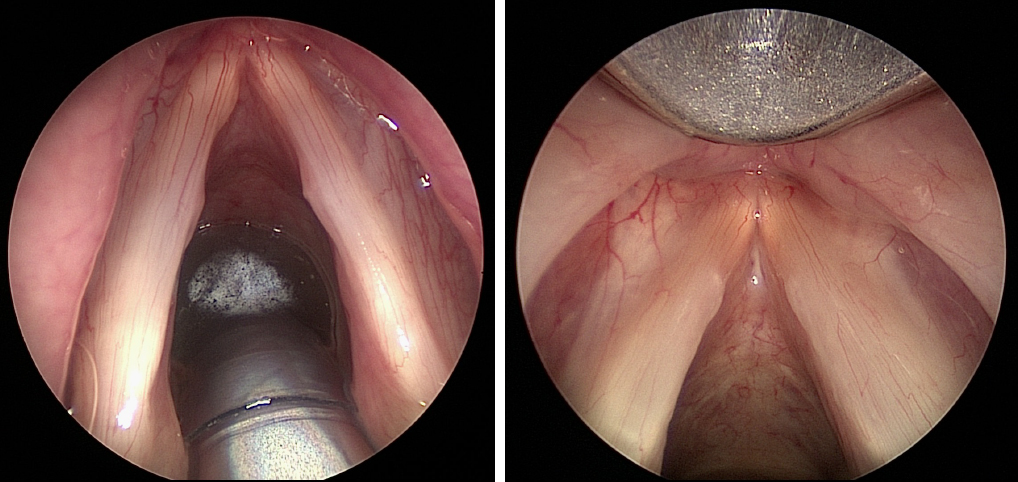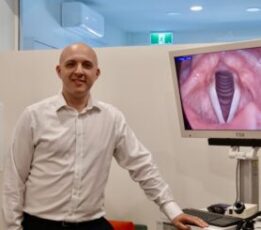Nodules
Definition:
Nodules are bilateral (on both vocal folds), benign (not cancerous), soft swellings usually located at the junction of the front and mid sectionof the vocal folds. They can vary in size and can be acute or chronic. The acute form can be seen after an episode of prolonged voice trauma and may abate after several hours or even one day of voice rest whereas more chronic nodules may not respond favourably to voice rest. These established nodules can become “fibrosed” which means there have been changes to the cellular structure of the vocal folds. Nodules usually affect the sound of the person’s voice.
Causes:
It is commonly accepted that nodules are caused by faulty voice use patterns or vocal trauma. This may include using the voice in a strained way, yelling, speaking over background noise for long periods of time or singing in a less than efficient way. Nodules may also be seen after prolonged or demanding voice use in the absence of obviously faulty vocal technique. Some research has suggested that even opera singers can demonstrate soft nodular swellings immediately after a performance but that this can disappear within a few hours of singing.

Examples of bilateral True Vocal Fold Nodules
Diagnosis:
On clinical history, Hoarseness with a reduced pitch range is the most common symptom.Patients may also experience voice breaks. Nodules can be detected via mirror laryngoscopy or nasendoscopy under normal light but you can’t be 100% assured that this is the correct diagnosis without stroboscopic evaluation. A stroboscopic evaluation gives us an idea of the vibratory characteristics of the vocal folds, which is important with nodules as some are soft and pliable, whereas others are firm and stiff. Stroboscopy is also important with nodules because sometimes there may be an underlying cyst which looks like a nodule but is not in fact one. The vocal fold on the other side may have a reactive nodule (i.e. a small swelling that is a reaction to the trauma of colliding with the swollen vocal fold).
Management:
Varies according to the size and characteristics of the nodules and the functional impact. The smaller, softer appearing nodules generally respond favourably to voice rest and to speech therapy that aims to decrease their size and eliminate the voice use patterns that may have caused them in the first place. More established nodules will also respond well to therapy but will need longer to recede. There are some cases that require surgical treatment but this is rare and is only advised after therapy has been trialed first.Surgical treatment can range from simple steroid injections into the nodules, through to endoscopic surgical removal.
Recommendations:
- Trial 24 to 36 hours of complete voice rest (no whispering or voice production of any type).
- Commence voice therapy with a speech pathologist.
- Address singing voice use as well if a singer
- Discuss with the diagnosing specialist whether short-term use of cortisone is indicated (not the preferred first option but may be indicated if there is evidence of secondary vocal fold inflammation).
- Review the diagnosis if there is no progress preferably by undergoing videostroboscopy to determine whether there is an underlying cyst or another lesion such as a polyp.
- Review the size and severity of the nodules after voice therapy to determine whether the problem has been remediated without the need for surgical intervention.







